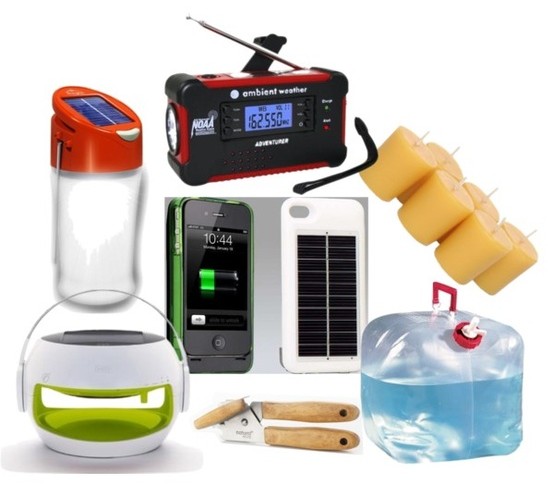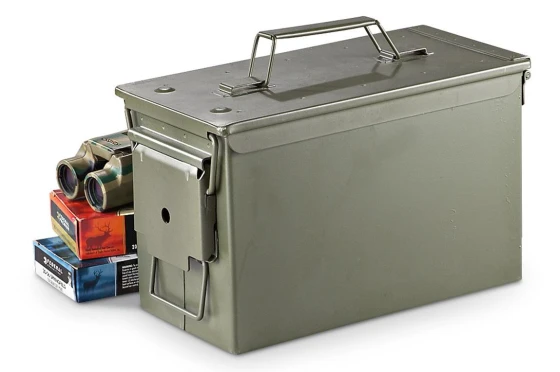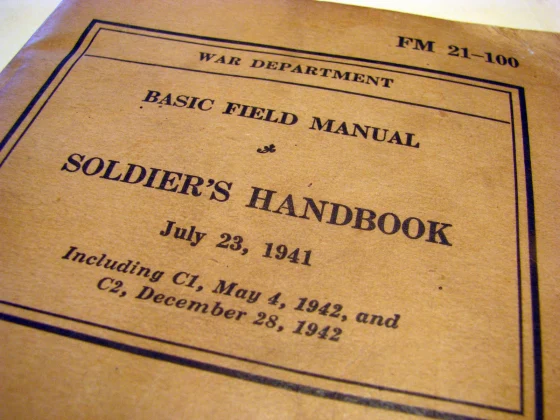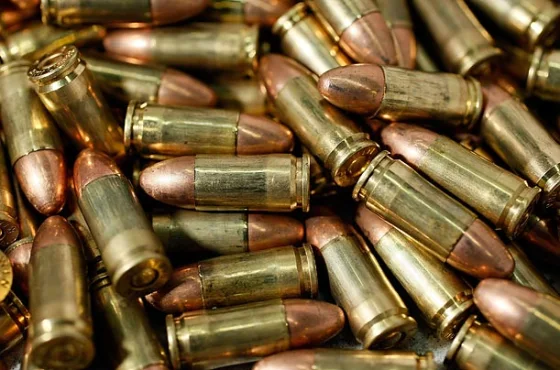Spoiler:
Below we review 13 different aluminum and polymer box magazines and 5 different drum magazines available for AR-15 style rifles (and other rifles that use STANAG magazines).
Magazines approved for US military use, that are plentiful and inexpensive, and that are highly recommended by Savannah Arsenal include:
- Magpul Gen3 P-Mag Polymer 30-Round
- C-Products Stainless Steel 30-Round
- D&H Aluminum 30-Round
- Okay Industries Surefeed Aluminum 30-Round
There are a number of other quality magazines reviewed further down. If you don’t have the patience for a detailed explanation of other magazines, then your rifle will still be well served by any of the magazines above. If you want to know more, then keep reading.
AR-15 Magazines Reviewed:
Introduction:
- NATO Standardization Agreement “STANAG” Magazine Concept
- Magazine Capacity
- Aluminum Box Magazines
- Polymer Box Magazines
- Drum Magazines
Box Magazines:
- Brownell’s Aluminum 30-Round
- C Products Defense Stainless Steel 30-Round
- D&H Aluminum 30-Round
- HexMag Polymer 30-Round
- Lancer Polymer 30-Round
- Magpul Gen-3 P-MAG Polymer 30-Round
- Magpul Polymer 40-Round
- Mission First Tactical Polymer 30-Round
- Okay Industries Surefeed Aluminum 30-Round
- Surefire Aluminum 60-Round
- Tapco Gen2 Polymer 30-Round
- Tango Down Polymer 30-Round
- Thermold Zytel 30-Round
Drum Magazines:
- Beta-C 100-Round Drum
- Magpul D-60 60-Round Drum
- X Products X-15 50-Round Drum
- KCI Beta Mag (Clone of Beta-C) 100-Round Drum
- MGW Snail Drum Magazine
Torture Testing:
Recommendations:
back to top
Introduction:
NATO Standardization Agreement “STANAG” Magazine Concept:
From the above Wiki link: A STANAG magazine or NATO magazine is a type of detachable firearm magazine proposed by NATO in October 1980. Shortly after NATO’s acceptance of the 5.56×45mm NATO rifle cartridge, Draft Standardization Agreement (STANAG) 4179 was proposed in order to allow NATO members to easily share rifle ammunition and magazines down to the individual soldier level.
Magazine Capacity:
5-Round Box Magazine: Typically used for hunting where local regulations limit the number of rounds in the hunting firearm to 5-rounds, or in some competitive target shooting. Useless for self-defense.
10-Round Box Magazine: Typically used in backward-ass states that limit firearm magazine capacity to 10 rounds, or in some competitive target shooting.
20-Round Box Magazine: Perfect for shooting from a prone position or from a tabletop at the range. It is a good idea to have one or two of these in your inventory to use when you zero an AR-15 so that you can rest the forend of the rifle on a beanbag or bipod and not have the magazine touch the shooting table.
30-Round Box Magazine: 30-rounds are the most common AR-15 magazine capacity. They present a good balance of reliability, capacity, mobility, and shootability.
40-Round Box Magazine: Traditionally as magazine capacity increased, their reliability decreased. In the early days of the M-16/AR-15 the 20-round magazines were the most reliable, followed closely by 30-round magazines. I am not aware of a 40-round magazine having ever been issued by the military, and most commercially available 40-rounders available to the public were very unreliable.
Magpul and several other companies have recently released 40-round polymer magazines. Magpul’s 40-round P-Mag has earned a reputation as being very reliable. Two reasons that might give you pause about 40-round magazines is that it is hard to find magazine pouches made them, and it is more problematic to shoot from a prone position or rifle range tabletop with a tall magazine.
50, 60, & 100-Round Drum Magazines: There are several AR-15 drum magazines on the market that can hold 50, 60, or 100 rounds.
Aluminum Box Magazines:

Aluminum magazines for AR / M16 rifles, when manufactured under heavy quality control, are very reliable. Their weakness, however, is that their thin and delicate bodies and feed-lips can be easily damage if dropped or landed on.
Aluminum AR magazines are made in either 20 or 30-round capacity. There are a few low-grade manufacturers that have made 40-round magazines throughout history. Avoid these. Traditionally as a general rule, the lower round capacity of a magazine, the more reliability you can expect. The 20-rounders were considered the most reliable, and for a little less reliability you could get 30-round magazines. With increases in manufacturing technology and experience the 30-round magazines can be expected to be just as reliable as the 20-round magazines. Still, avoid the cheap 40-round magazines.
 Aluminum magazines have been manufactured by numerous manufacturers over the years. They are not all equal in quality of the stamping and welding tolerances.
Aluminum magazines have been manufactured by numerous manufacturers over the years. They are not all equal in quality of the stamping and welding tolerances.
The manufacturer’s logo will be stamped or engraved into the bottom of the floor-plate of the magazine (shown left). Avoid magazines that do not have any type of manufacturer’s mark on the floor-plate. There is no way of telling who made them or how reliable they are.
Stay away from unbelievable deals on used G.I. aluminum magazines at gun-shows and internet listings. In the military “used” translates to “abused”. There is a very good chance that the magazine lips may be bent out of spec, or the spring may be worn out. New quality magazines are now too plentiful and inexpensive for you to take the chance with acquiring junk.
How To Disassemble a “G.I.” Aluminum Box Magazine:

Polymer Box Magazines:
The AR15 / M16 rifle system was originally designed to use magazines manufactured from lightweight, thin aluminum. It was problematic to design a polymer AR magazine thin enough to hold a high volume of rounds, fit into the rifle, and still maintaining strength, integrity, and heat resistance of the magazine body and feed-lips. The magazine would need to hold together under fully loaded spring pressure, and then not melt when fired from hot, automatic weapon. Eventually advances in polymer manufacturing technology allowed the creation of plastic magazines thin enough and strong enough to be used AR /M16 weapon systems.
Drum Magazines:
I am not a big fan of drum magazines. They are heavy and awkward. Most are very unreliable as they have delicate and complicated mechanisms that are prone to jam up. They are all expensive. You can typically purchase 10 to 15 quality 30-round stick magazines for the price of one drum.
back to top
Brownell’s Aluminum 30-Round:
These are approved for US military use.
Brownell’s magazines are considered top-of-the-line.
back to top
C Products Defense Stainless Steel 30-Round:
back to top
D&H Aluminum 30-Round:
These are approved for US military use.
D&H magazines are considered top-of-the-line. They are made on former Labelle tooling. They are OEM for several AR15 manufacturers.
back to top
HexMag Polymer 30-Round:
Series 2
back to top
Lancer Polymer 30-Round:
back to top
Magpul Gen-3 P-MAG Polymer 30-Round:
They are approved for US military use. The are standard Issue for the US Army’s 75th Rangers and 61st Cavalry. The Gen-3 is now the exclusive issue of the USMC.
 Magpul Industries P-Mags are considered absolute tier-one equipment. They are manufactured in both 20-round and 30-round capacity versions, and come in black, olive drab, and tan. There is a version that sports a thin, clear window on the side so the operator can view how many rounds are left in the magazine. When you purchase them, verify that you are getting the “M revision” version. With this design update the part of the magazine that inserts into the weapon’s magazine well has been modified. There were issues with their fit and function when used in some non-AR rifles which are designed to accept NATO STANAG M16 (AR) magazines. Unless you think that you will ever use the magazines in a non-AR style rifle you probably shouldn’t really worry about it. Fortunately, the “M” revision has been out a while and I haven’t seen anyone selling the pre “M” version for quite some time, so you probably will not have to worry about it.
Magpul Industries P-Mags are considered absolute tier-one equipment. They are manufactured in both 20-round and 30-round capacity versions, and come in black, olive drab, and tan. There is a version that sports a thin, clear window on the side so the operator can view how many rounds are left in the magazine. When you purchase them, verify that you are getting the “M revision” version. With this design update the part of the magazine that inserts into the weapon’s magazine well has been modified. There were issues with their fit and function when used in some non-AR rifles which are designed to accept NATO STANAG M16 (AR) magazines. Unless you think that you will ever use the magazines in a non-AR style rifle you probably shouldn’t really worry about it. Fortunately, the “M” revision has been out a while and I haven’t seen anyone selling the pre “M” version for quite some time, so you probably will not have to worry about it.
Magpul now has a “Gen-3” version out. There are some a few ergonomic improvements, but functionally they should be the same as the “M” revision. The United States Marine Corps now uses the Gen-3 version of the P-Mag. The Army’s 75th Rangers and 61st Cavalry, among many units, have been using P-Mags for years.
back to top
Magpul Polymer 40-Round:
back to top
Mission First Tactical Polymer 30-Round:
back to top
Okay Industries Surefeed Aluminum 30-Round:
They are approved for US military use.
back to top
Surefire Aluminum 60 and 100-Round:
 Surefire (the company that builds tier-one weapons lighting systems and weapon sound-suppression systems) recently started selling 60 and 100-round aluminum magazines. The idea is that you can keep shooting your way out of trouble, rather than get shot while reloading. This is a great idea, but the downside is that they hang a long way under the rifle which can restrict movement and the ability to shoot from prone or unorthodox positions.
Surefire (the company that builds tier-one weapons lighting systems and weapon sound-suppression systems) recently started selling 60 and 100-round aluminum magazines. The idea is that you can keep shooting your way out of trouble, rather than get shot while reloading. This is a great idea, but the downside is that they hang a long way under the rifle which can restrict movement and the ability to shoot from prone or unorthodox positions.
They are very expensive — over $100. Like any quality, super high-capacity magazine, you have to make a cost/benefit analysis on whether the additional firepower capability is worth the additional expense (you can buy 15 high-quality 30-round Magpul magazines and carry 450 rounds of ammunition for the same prices as carrying 60 rounds of ammunition in one Surefire magazine). Also, if the single magazine of 60 or 100 rounds of ammunition is damaged (dropped or shot), then you are out that many rounds of firepower. If the same damage occurs to a less expensive 30-rounder, dump the magazine, load a fresh one, and get back into the fight. A final note: the 60 and 100 round magazines are very long compared to a 20-round or 30-round magazine.
They will hang out of the bottom of the rifle considerably farther than lesser capacity magazines. A 100-round magazine will greatly hinder your ability to fire from the prone position.
Addendum: As of Q1-17 these magazines have developed a less than stellar reputation. They are expensive, and not as reliable as one would expect from a company like Surefire. The have a terrible reputation with regards to reliably functioning with steel case ammunition You should pass on these.
back to top
Tango Down ARC Polymer 30-Round:
Make sure that you get the Gen2 version.
back to top
Tapco Gen2 Polymer 30-Round:
back to top
Thermold Zytel 30-Round:
Manufactured by Master Molder, Thermold magazines were used by the Canadian military for a brief time, and the company liked to brag about it. Eventually they were taken out of service and replaced with traditional aluminum magazines. They are reliable, but the Canadian military discovered that the feed lips on the magazines were prone to melt when used in weapons on full-auto. As a civilian with a semi-automatic weapon, you will probably not ever get a Thermold hot enough to melt the lips, but with other similarly priced polymer magazines on the market that are more heat tolerant, I would stray away from Thermold and go with either high-quality traditional aluminum magazines, or Magpul Industries polymer P-Mags.
back to top
Beta-C 100-Round Drum:
The Beta-C is a 100-round dual drum magazine designed to provide the operator with sustained firepower. It was used extensively in the early years of the post 9/11 war on terror by our military and private contractors. While exponentially higher quality than the MWG snail magazine (discussed further below), they are complex mechanisms, require careful maintenance and graphite lubrication, and over time have proven prone to malfunction or breakage during the stress and abuse of combat. Serious operators have begun to stray away from these. Beta magazines are also very expensive. For the Beta’s retail price of around $225 you could instead purchase more than 20 30-round high quality aluminum G.I. style magazines, and have the capability to load six times as much ammunition as the Beta. Pass on these.
Beware: There are Korean made knockoffs (discussed further down) of the original Beta Drum Magazine on the market. They have a reputation of being absolute junk. Avoid these like the plague.
back to top
Magpul D-60 60-Round Drum:
As of Q1-17 these have a great reputation for reliability, although the can get bound up if you improperly try to unload them. If you jam up one of these magazines, do not attempt to disassemble the magazine without first watching this video. The internal spring is under tremendous pressure. If you pull the wrong piece of in the wrong sequence, the least of your problems will be that the magazine will destroy itself when the spring instantly unwinds. You can be injured by flying parts. You have been warned.
MSRP for these drum magazines is $129 US. For the same price you could buy 10-15 30-round P-Mags. For around $25 you could buy 2 30-round P-Mags and a Magpul magazine connector and carry the same number of rounds (60). These have a “cool factor”, but like all rifle drums, they aren’t necessarily the best value for your prepper dollar.
back to top
X Products X-15 50-Round Drum:
back to top
KCI BetaMag (Clone of Beta-C) 100-Round Drum:
KCI does not list these in their product line anymore, although as of Q3-17 there are plenty available at online retail sites. They have a general reputation as being unreliable knockoffs of the real thing.
back to top
MGW Snail Drum Magazine:
 This plastic 90-round magazine has been around since the days of Miami Vice. It is more of a novelty item than a piece of serious equipment. Its plastic is less than top quality. It has a marginal reputation for reliability. When loaded into the rifle it adds the combined weight of the magazine plus 90-rounds of ammunition way out to the left side of the rifle, thus creating an asymmetric balance and a decrease to the rifle’s handling characteristics. They suck.
This plastic 90-round magazine has been around since the days of Miami Vice. It is more of a novelty item than a piece of serious equipment. Its plastic is less than top quality. It has a marginal reputation for reliability. When loaded into the rifle it adds the combined weight of the magazine plus 90-rounds of ammunition way out to the left side of the rifle, thus creating an asymmetric balance and a decrease to the rifle’s handling characteristics. They suck.
 To the right we can see Miami Vice’s Crocket and Tubbs about to blast a fool who was dumb enough to invest his hard-earned money on a MGW snail mag.
To the right we can see Miami Vice’s Crocket and Tubbs about to blast a fool who was dumb enough to invest his hard-earned money on a MGW snail mag.
back to top
Side By Side Comparisons and Torture Testing:
- AR15.com’s Our Military Magazine Torture Test
- AR15.com’s The Unscientific Plastic Magazine Test
- Loadout Room’s AR-15 Magazines Test and evaluations Part 1
- ModernServiceWeapons.com’s AR15/M16 Magazine Drop Test: Plastic vs. Aluminum
- Tactical Response’s Field Test Comparison: 30-Round Magazines
back to top
AR-15 Magazine Recommendations:
Qualtity Gear:
- Magpul P-Mag polymer magazines,
- D&H Industries (formerly Labelle) G.I. style magazines, top-of-the-line. OEM for several manufacturers.
- Brownell’s brand magazines Considered top-of-the-line and are used by the military.
Junk:
- Any aluminum magazine without a manufacture’s stamp on the baseplate.
- Any “used” G.I. magazines.
- Promag brand magazines.
- National Magazine brand magazines.
Savannah Arsenal’s Related Pages:
- Savannah Arsenal’s AR-15 / M4 Page
- Savannah Arsenal’s Firearms Essentials Page
- Savannah Arsenal’s Ammunition Essentials Page
- Savannah Arsenal’s Marksmanship Page
- Savannah Arsenal’s Gun Cleaning & Maintenance Page
- Savannah Arsenal’s Tactical Rifle Essentials Page
- Savannah Arsenal’s Tactical Rifle Accessories Page
- Savannah Arsenal’s Tactical Rifle Ammunition Page
- Savannah Arsenal’s Tactical Rifle Optics Page







































